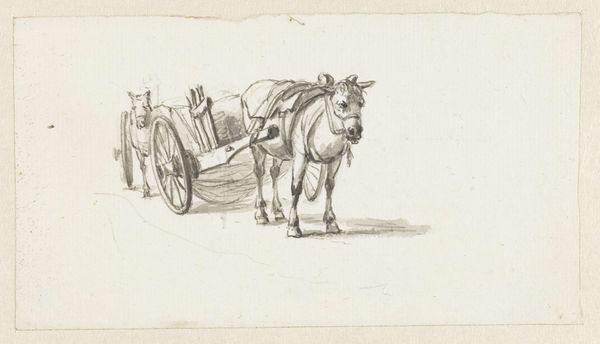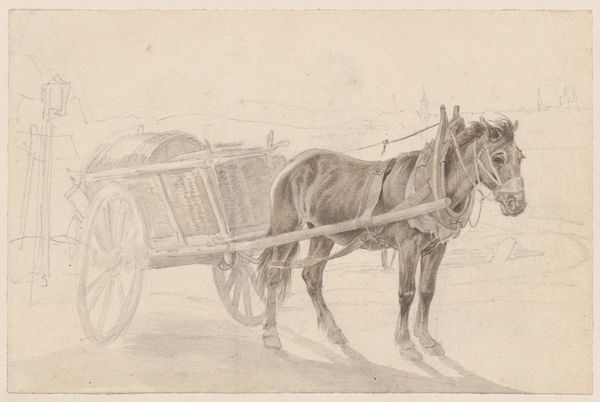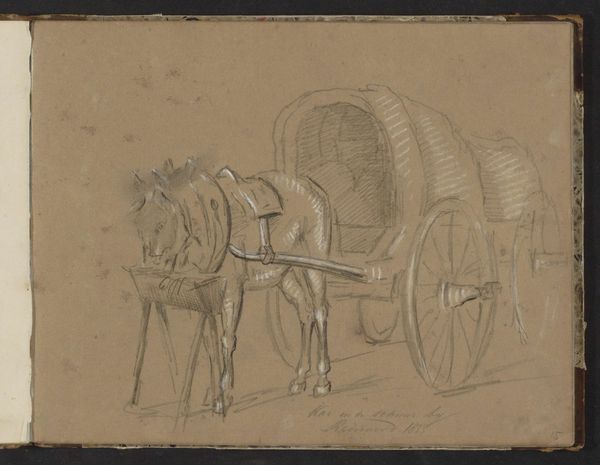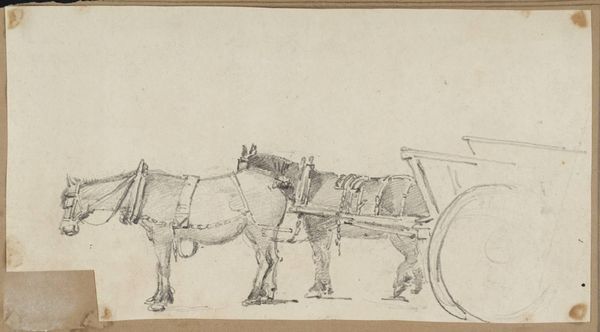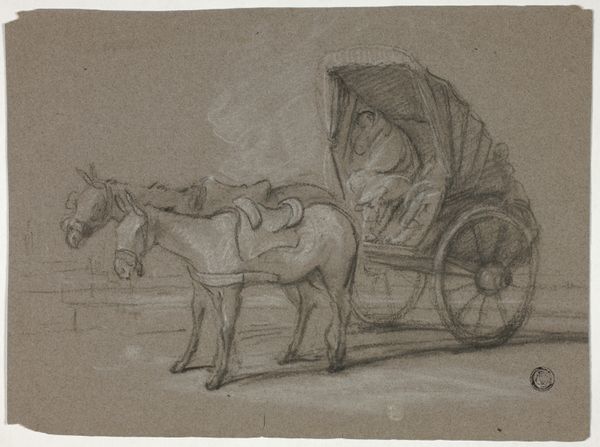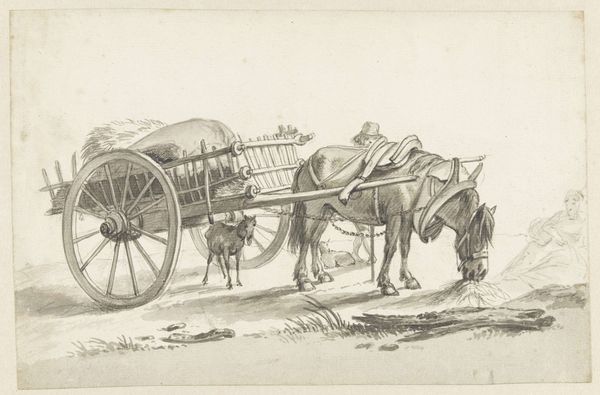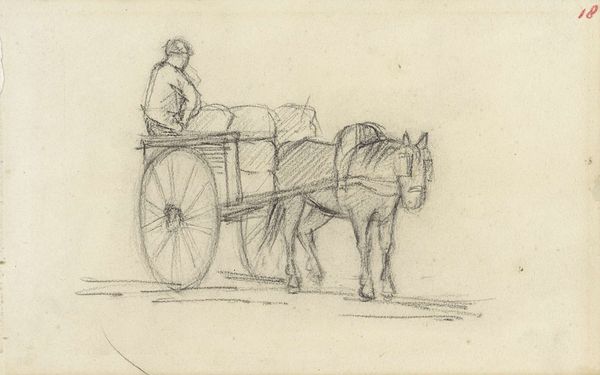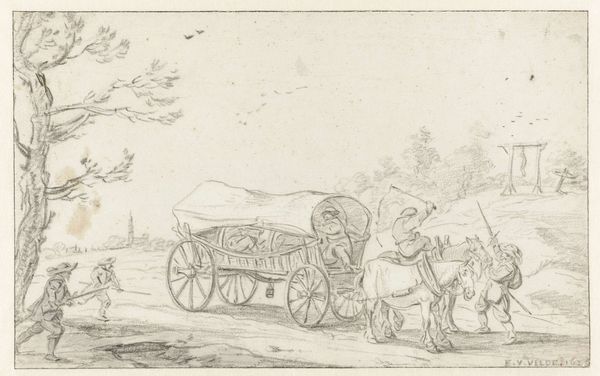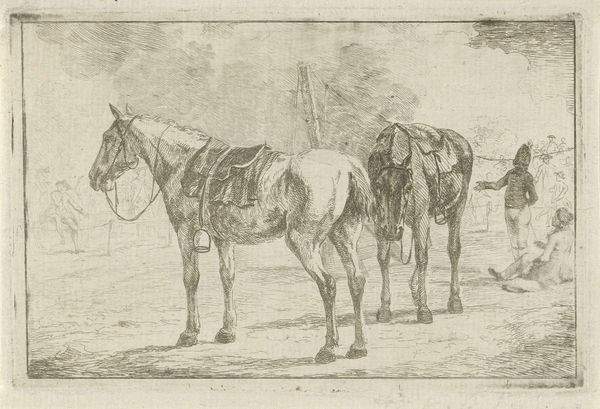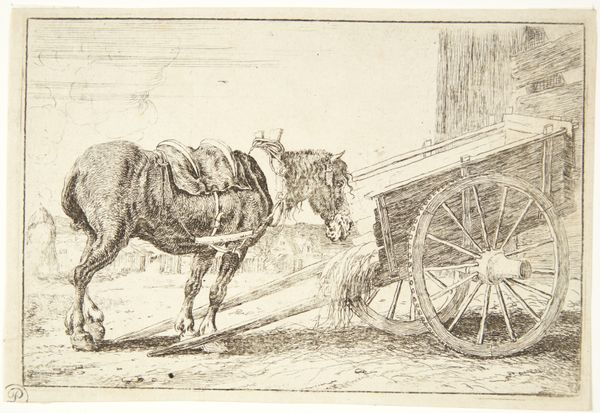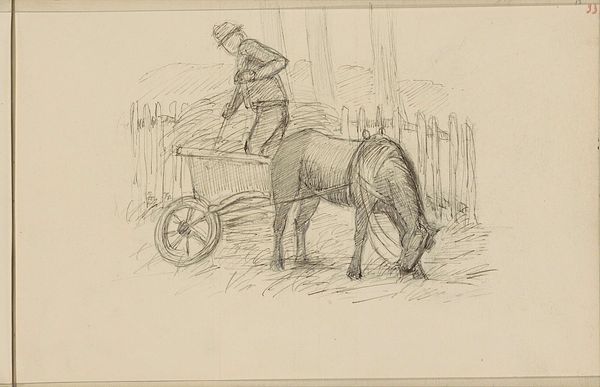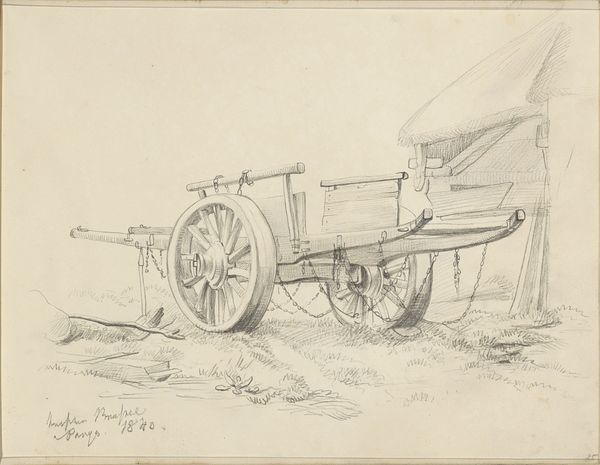
drawing, paper, pencil
#
drawing
#
pencil sketch
#
landscape
#
figuration
#
paper
#
pencil
#
horse
Dimensions: height 158 mm, width 247 mm
Copyright: Rijks Museum: Open Domain
Curator: Willem Cornelis Rip created this delicate pencil sketch in 1877, titled "Gesluierde figuur met een paardenkar op een pad"—or "Veiled Figure with a Horse Cart on a Path." Editor: It’s striking, a hazy melancholia almost obscures the forms. It evokes that sense of weary, slow movement through a muted landscape, doesn't it? Curator: Absolutely. Look at the veiled figure; it’s almost ghostlike. The veil softens the human presence, lending the scene a timeless quality, a kind of eternal pastoral moment. It draws from archetypes of rural life. Editor: I'm wondering who the shrouded person is. Is it mourning? I'm trying to read Rip's choices: obscuring the figure speaks to how marginalized people and laborers often disappear from mainstream historical narratives. Are they not worth remembering? Curator: That reading resonates powerfully. And consider the horse and cart: a crucial part of agricultural society. Notice the weight and quiet dignity given to the animal's depiction. It reflects a connection to pre-industrial modes of existence. Editor: True, but there’s also a deep tension between humanity, nature, and labor involved here. We can't forget about the political implications of romanticizing pastoral imagery when labor exploitation was rampant. This is probably occurring around the Industrial Revolution so a commentary of traditional agricultural ways, compared to mass industrialization. Curator: It’s a valid point, to avoid a merely nostalgic gaze. Yet the artwork feels less like a celebration and more like a subdued observation. The blurring of lines, the gray tones, communicate loss. Perhaps it memorializes something already fading. Editor: Or signals its slow, grueling disappearance through erasure. Looking at it in the present moment, it compels me to confront the historical consequences of industrial change that are very pertinent still. Curator: It seems to be both memorial and silent accusation. Ultimately, the artwork creates this resonating symbolic space, inviting reflection on our connection to history. Editor: Agreed. By bringing the margins to our attention. Thank you for shedding some light on what might've remained invisible, without the tools of observation.
Comments
No comments
Be the first to comment and join the conversation on the ultimate creative platform.
